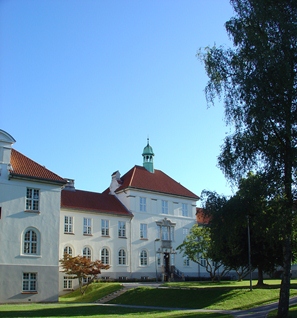The history of Health
The Faculty of Medicine at Aarhus University (AU) was established in 1936, eight years after the foundation of the university itself. However, the university had actually started teaching its first medical students to take what was known as "the medical science preparatory examination" as early as 1933.
In the period 1933-1953, students had the opportunity to take a number of exams at the faculty, but it was not until 1952 that it became possible for them to sit their finals in Aarhus.
At that time, 729 students were enrolled at the faculty, accounting for 42 percent of the university’s 1,750-strong student body.

From medical science to health sciences
In 1992, the Aarhus College of Dentistry merged with the Faculty of Medical Sciences and the faculty changed its name to the Faculty of Health Sciences.
In 2000, a health sciences education centre and library were established in the building that previously housed the "Jutland Maternity Home". The building was then renamed the “Victor Albeck Building" after Victor Albeck, the first consultant at Fødselsstiftelsen (The Childbirth Foundation) and one of the founding fathers of the university.
In 2011, the Faculty of Health Sciences was renamed “Health”.
Working relationship with the hospitals
Ever since it was founded in 1936, a close working relationship has existed between the faculty and the hospitals in Aarhus, which have now all been merged under the banner of Aarhus University Hospital. The organisations cooperate closely on both clinical teaching and research, which is carried out at all hospitals in the Central Denmark Region.
Nobel Prize
Since the early 1950s, cell membrane research has been conducted at the Department of Physiology. This work subsequently resulted in Jens Christian Skou discovering the sodium-potassium pump, for which he was awarded the 1997 Nobel Prize in Chemistry.
